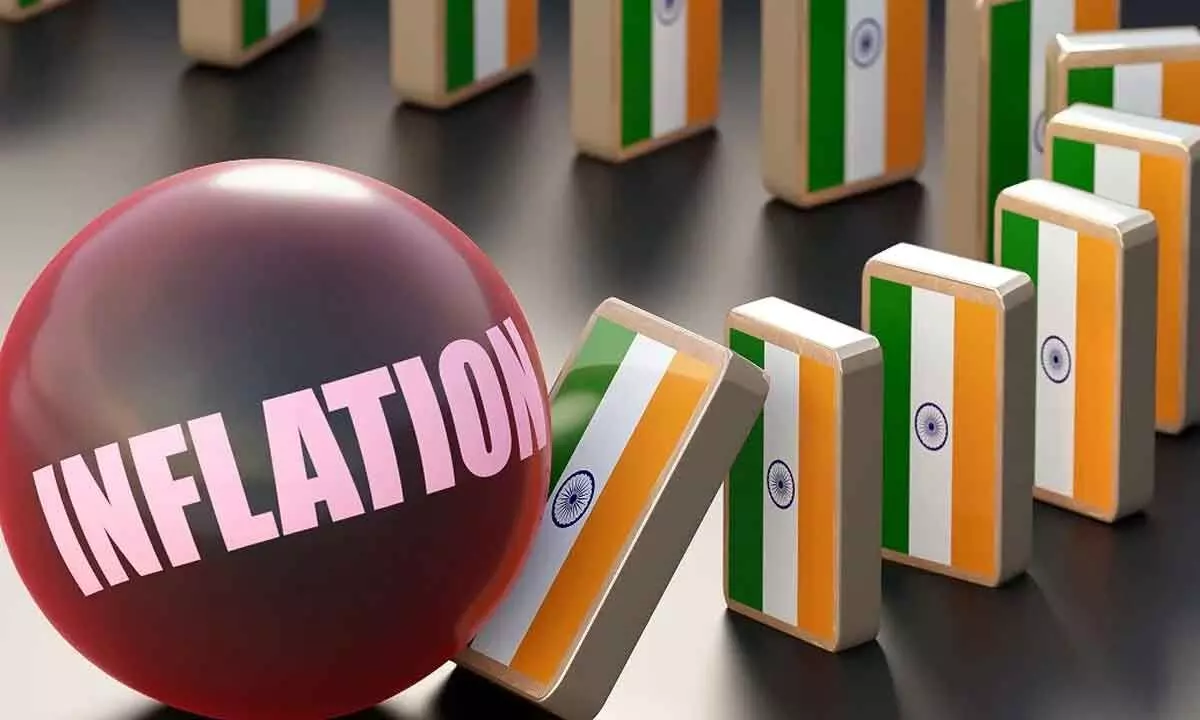The government’s goal should be on achieving 4% CPI
image for illustrative purpose

The CPI inflation moderated to a three-month low at five per cent in September. Thus, inflation is now within RBI’s ideal 2-6 per cent band. Additionally, core-CPI or CPI excluding food and beverages, fuel and light and petrol and diesel for vehicles inflation dipped to 4.7 per cent in September, the lowest since February 2020.
Notwithstanding favourable headline inflation print, food inflation remains elevated. Moreover, the erratic monsoon, lag in sowing of crucial kharif crops such as pulses and oilseeds and modest reservoir levels do not augur well as regards the food inflation outlook. Perceived inflation during the festive period, as per Icra, may have a larger impact on sentiment this year, as compared to the previous fiscal. One should also not forget that festivities in the year gone by were prioritised after two years of Covid. Analysts’ projections suggest that headline CPI inflation will remain volatile to a wide range until next June, with the outlook for food inflation remaining murky amid continuing volatility in crude oil prices. Nevertheless, further monetary tightening is not warranted in the near term, amid the continued lagged transmission of past rate hikes through the economy.
Given the MPC’s CPI inflation projections for the first quarter of the next fiscal and the derived forward looking real policy rate, analysts maintain their expectations of an extended pause until the beginning of a shallow rate cut cycle of 50-75 bps in August next year. Of course, this cooling has been partly precipitated by major corrections in vegetable prices. Nevertheless, the near-term picture, as per Appreciate, is less clear when it comes to cereals, spices, and pulses, mainly due to uncertain weather conditions, the current geopolitical situation and global shortages. Food inflation is showing a worrying trend, with sustained inflation for non-perishables like pulses, cereals and spices, keeping overall inflation elevated, even as transient price spikes for perishables fade. In addition, the oil situation also looks hazy going forward: while prices were initially on the rise due to supply shocks, they could now rise further due to second-order effects of the unexpected Israel-Palestine conflict.
Any oil price hikes will have an impact on the non-food component of inflation. The thrust is from fuel and light, which is negative, keeping in mind the government’s easing of LPG prices and vegetables, which eased to just 3.4 per cent from the 26 per cent levels of August. Edible oil also contributed to the decline. Until robust recovery continues and food inflation trajectory shows uncertainty policy rates says Equirus finding, could remain status quo, while yields impacted by other factors like global, domestic, including fiscal, OMO sales, liquidity could remain elevated. While five per cent is reached, the task downhill to four per cent will remain a challenge in the near future. More so, because of erratic monsoon and weak sowing (especially for pulses and rice) may lead to a decline in harvests.

